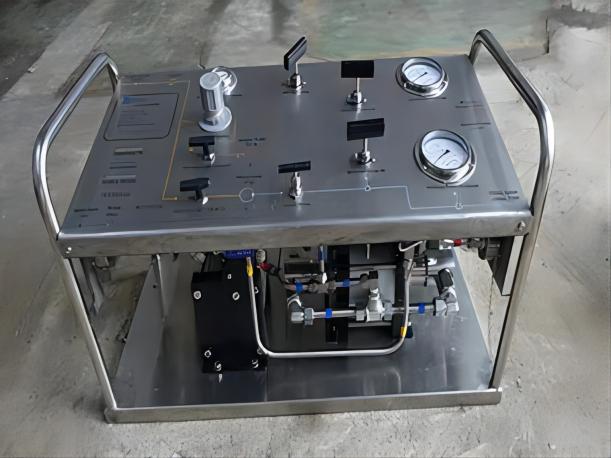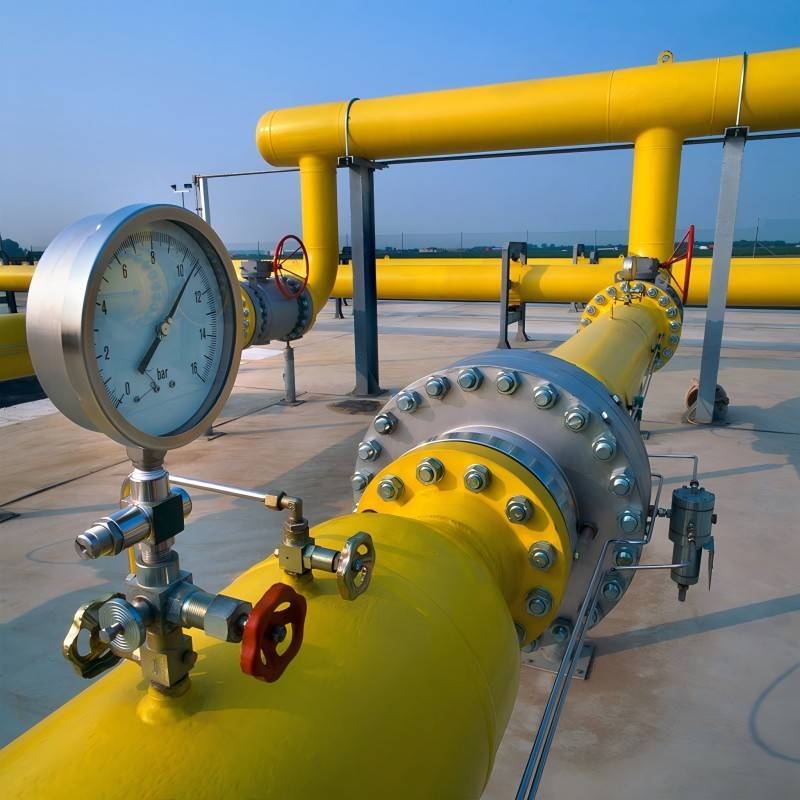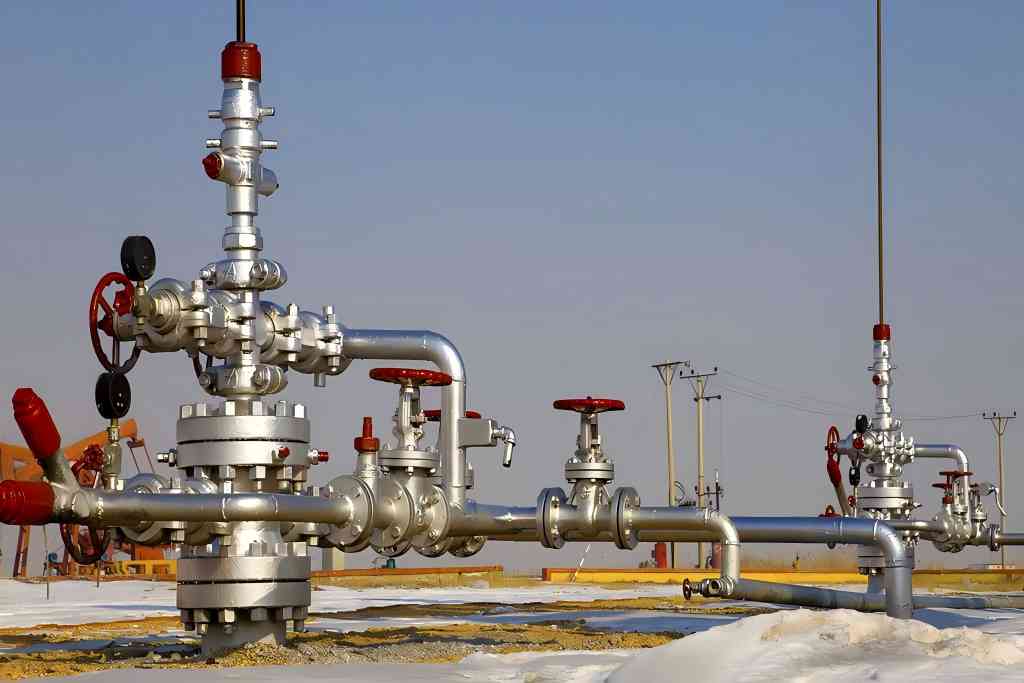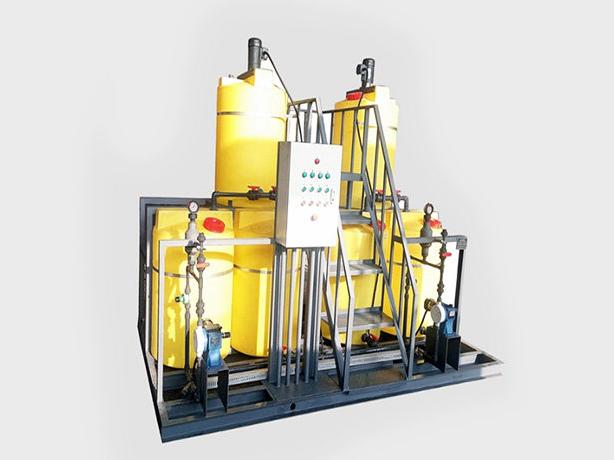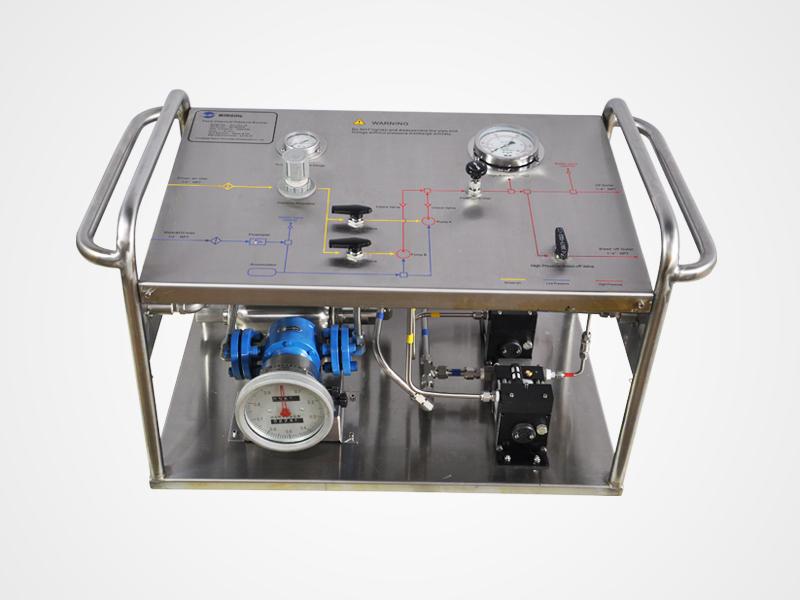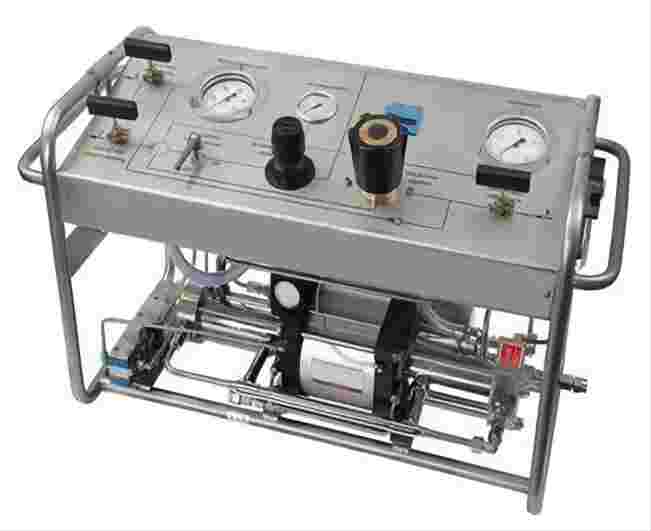High-Pressure Hose Testing Equipment: What You Need to Know
High-pressure hose testing equipment is used to test the integrity of high-pressure hoses, ensuring that they can safely withstand the pressures they are designed for. High-pressure hoses are used in a variety of industries, including construction, mining, manufacturing, and agriculture. They are used to transport a variety of fluids, including hydraulic fluid, water, and air.
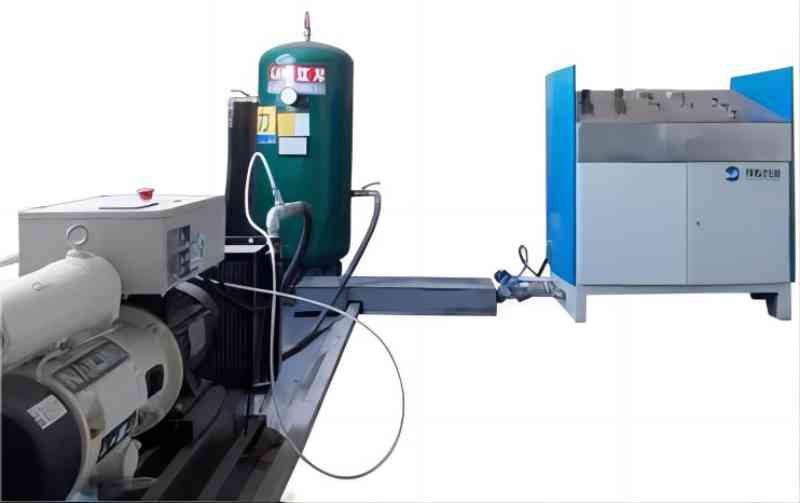
Why is it Important to Test High-pressure Hoses?
It is important to test high-pressure hoses regularly to ensure that they are in good condition and free of leaks or other defects. High-pressure hose testing equipment can be used to test new hoses before they are put into service, as well as used hoses to ensure that they are still safe to use.
Different Types of High-pressure Hose Testing Equipment
There are different types of high-pressure hose testing equipment available, depending on the type of hose being tested and the pressure rating of the hose. Some common types of high-pressure hose testing equipment include:
- Air-driven hydrostatic test pumps: These pumps use compressed air to generate hydraulic pressure. They are typically used to test hydraulic hoses.
- Gas boosters: These pumps use compressed gas to generate hydraulic pressure. They are typically used to test high-pressure water hoses and air hoses.
- Hose test rigs: These rigs provide a controlled environment for testing high-pressure hoses. They are typically used to test hydraulic hoses and high-pressure water hoses.
- Hose test benches: These benches are used to test high-pressure hoses in a variety of orientations. They are typically used to test hydraulic hoses and high-pressure water hoses.
High-pressure hose testing equipment is typically used by qualified personnel who have been trained on how to use the equipment safely and accurately.
Applications of High-Pressure Hose Testing Equipment
High-pressure hose testing equipment is used in a variety of industries, including:
- Construction: High-pressure hose testing equipment is used to test hydraulic hoses used in construction equipment, such as excavators, bulldozers, and cranes.
- Mining: High-pressure hose testing equipment is used to test hydraulic hoses and high-pressure water hoses used in mining equipment.
- Manufacturing: High-pressure hose testing equipment is used to test hydraulic hoses, high-pressure water hoses, and air hoses used in manufacturing equipment.
- Agriculture: High-pressure hose testing equipment is used to test hydraulic hoses and high-pressure water hoses used in agricultural equipment.
High-Pressure Hose Testing Equipment for Hydraulic Hoses
Hydraulic hoses are used to transport hydraulic fluid, which is used to power hydraulic systems. Hydraulic systems are used in a variety of equipment, including construction equipment, mining equipment, manufacturing equipment, and agricultural equipment.
Hydraulic hoses are typically made of reinforced rubber or plastic. They are rated for a specific pressure, which is the maximum pressure that the hose can safely withstand.
It is important to test hydraulic hoses regularly to ensure that they are in good condition and free of leaks or other defects. High-pressure hose testing equipment can be used to test new hydraulic hoses before they are put into service, as well as used hydraulic hoses to ensure that they are still safe to use.
When choosing high-pressure hose testing equipment for hydraulic hoses, it is important to consider the following factors:
- The pressure rating of the hydraulic hoses being tested
- The length of the hydraulic hoses being tested
- The type of hydraulic fluid being used
- The environment in which the hydraulic hoses will be used
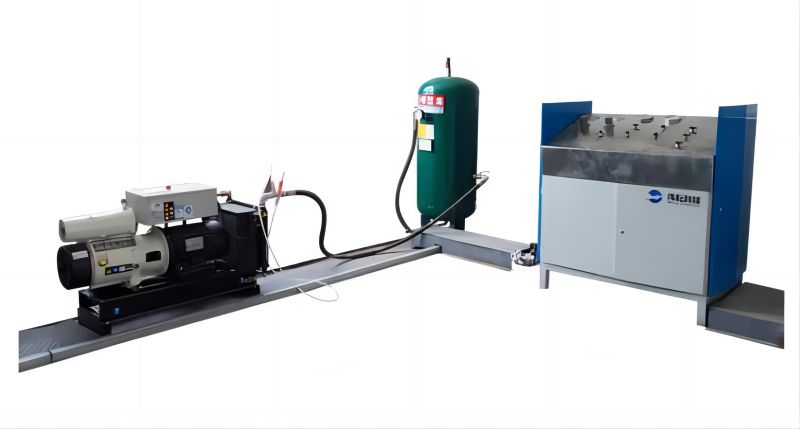
How to Use High-Pressure Hose Testing Equipment for Hydraulic Hoses?
To use high-pressure hose testing equipment for hydraulic hoses, follow these steps:
- Connect the hydraulic hose to the test pump.
- Close the bleed valve on the hydraulic hose.
- Open the valve on the test pump to apply pressure to the hydraulic hose.
- Monitor the pressure gauge on the test pump to ensure that the hydraulic hose is not exceeding its pressure rating.
- If the hydraulic hose is leaking or exceeds its pressure rating, stop the test and disconnect the hydraulic hose from the test pump.
Safety Precautions When Using High-Pressure Hose Testing Equipment for Hydraulic Hoses
When using high-pressure hose testing equipment for hydraulic hoses, it is important to follow these safety precautions:
- Always wear personal protective equipment (PPE), such as safety glasses, gloves, and long sleeves.
- Be aware of the pressure rating of the hydraulic hose being tested.
- Do not exceed the pressure rating of the hydraulic hose being tested.
- Use the appropriate test pump
High-Pressure Hose Testing Equipment for Water Hoses
Water hoses are used to transport water in a variety of applications, including irrigation, firefighting, and construction. Water hoses are typically made of rubber or plastic. They are rated for a specific pressure, which is the maximum pressure that the hose can safely withstand.
It is important to test water hoses regularly to ensure that they are in good condition and free of leaks or other defects. High-pressure hose testing equipment can be used to test new water hoses before they are put into service, as well as used water hoses to ensure that they are still safe to use.
When choosing high-pressure hose testing equipment for water hoses, it is important to consider the following factors:
- The pressure rating of the water hoses being tested
- The length of the water hoses being tested
- The type of water being transported
- The environment in which the water hoses will be used
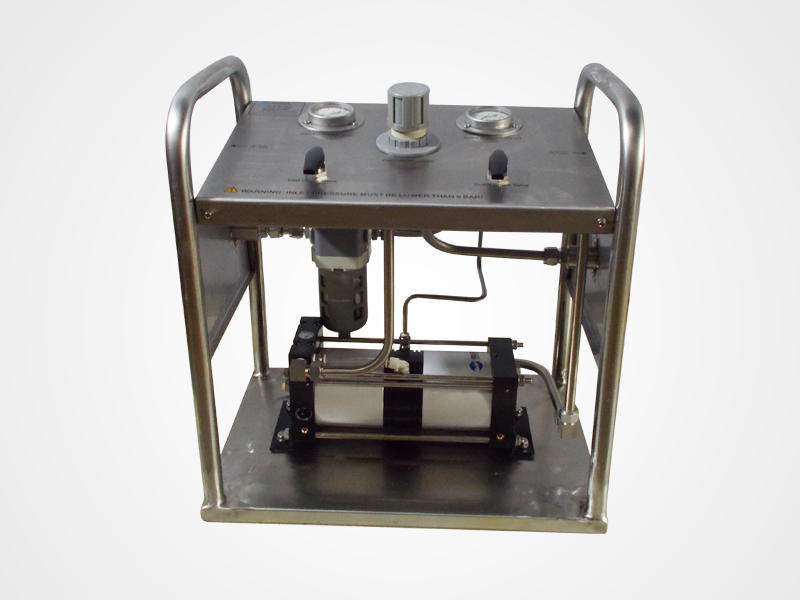
How to Use High-Pressure Hose Testing Equipment for Water Hoses?
To use high-pressure hose testing equipment for water hoses, follow these steps:
- Connect the water hose to the test pump.
- Close the bleed valve on the water hose.
- Open the valve on the test pump to apply pressure to the water hose.
- Monitor the pressure gauge on the test pump to ensure that the water hose is not exceeding its pressure rating.
- If the water hose is leaking or exceeds its pressure rating, stop the test and disconnect the water hose from the test pump.
Safety Precautions When Using High-Pressure Hose Testing Equipment for Water Hoses
When using high-pressure hose testing equipment for water hoses, it is important to follow these safety precautions:
- Always wear personal protective equipment (PPE), such as safety glasses, gloves, and long sleeves.
- Be aware of the pressure rating of the water hose being tested.
- Do not exceed the pressure rating of the water hose being tested.
- Use the appropriate test pump for the type of water being transported.
High-Pressure Hose Testing Equipment for Air Hoses
Air hoses are used to transport compressed air in a variety of applications, such as powering pneumatic tools, cleaning equipment, and inflating tires. Air hoses are typically made of rubber or plastic. They are rated for a specific pressure, which is the maximum pressure that the hose can safely withstand.
It is important to test air hoses regularly to ensure that they are in good condition and free of leaks or other defects. High-pressure hose testing equipment can be used to test new air hoses before they are put into service, as well as used air hoses to ensure that they are still safe to use.
When choosing high-pressure hose testing equipment for air hoses, it is important to consider the following factors:
- The pressure rating of the air hoses being tested
- The length of the air hoses being tested
- The type of compressed air being transported
- The environment in which the air hoses will be used
How to Use High-Pressure Hose Testing Equipment for Air Hoses
To use high-pressure hose testing equipment for air hoses, follow these steps:
- Connect the air hose to the test pump.
- Close the bleed valve on the air hose.
- Open the valve on the test pump to apply pressure to the air hose.
- Monitor the pressure gauge on the test pump to ensure that the air hose is not exceeding its pressure rating.
- If the air hose is leaking or exceeds its pressure rating, stop the test and disconnect the air hose from the test pump.
Safety Precautions When Using High-Pressure Hose Testing Equipment for Air Hoses
When using high-pressure hose testing equipment for air hoses, it is important to follow these safety precautions:
- Always wear personal protective equipment (PPE), such as safety glasses, gloves, and long sleeves.
- Be aware of the pressure rating of the air hose being tested.
- Do not exceed the pressure rating of the air hose being tested.
- Use the appropriate test pump for the type of compressed air being transported.
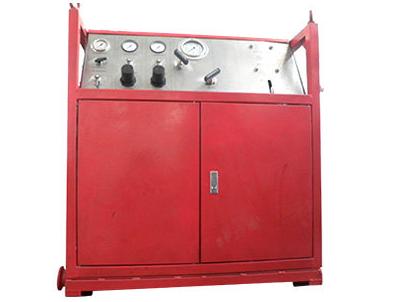
Conclusion
Regular testing of high-pressure hoses is essential for ensuring the safety of workers and equipment. High-pressure hose testing equipment can be used to test hydraulic hoses, water hoses, and air hoses. When choosing and using high-pressure hose testing equipment, it is important to follow the safety precautions listed above.

